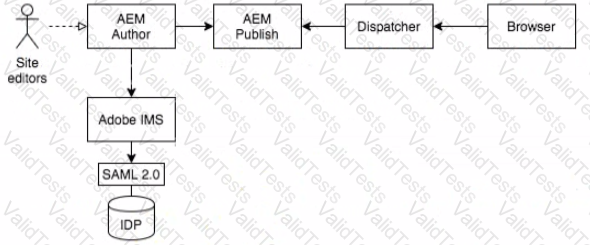AEM as a cloud service introduces major changes in the architecture by using containers. Which key architectural change was necessary to allow this to occur?
A customer has a website with 10,000 pages and wants to improve performance. Which option should be used?
A client's marketing pages are generally slow to load which is causing a significant drop in sales. All other AEM pages load within expected performance guidelines regardless of whether the visitor is being served the desktop or mobile experiences.
The marketing pages typically get slower when multiple external campaigns such as Facebook and AdWords drive traffic to those pages. The page performance tends to dip during high traffic periods. Internal campaign clicks such as those from hero images use similar campaign codes as external campaign traffic.
What should the Architect do to resolve this issue?
A company is implementing a new e-commerce site that is expected to get seasonal and flash-sale induced traffic peaks from all over the world. It is projected that a minute of downtime could cause excessive lost revenue. The company management wants to keep resource utilization to optimal levels without experiencing degradation to avoid introducing bugs in the system.
The Architect needs to choose between AEM 6.5 and AEM as Cloud Service.
What are the two most critical non-functional requirements the Architect must consider? (Choose two.)
AEM Site users report that the web content pages render very slowly. An Architect notices that the CPU usages of the AEM Publish instances are spiking and reviews the following entry in the log:
[Frt Nov 27 23:11:00 2019] [I] [pid 16004 (tid 140134145820416)] Current cache hit ratio: 47.94 %
What should the Architect do to increase the dispatcher cache ratio and prevent the AEM Publish CPU usage spikes?
Refer to the exhibit.

A customer has SSO on its AEM Author environment using Adobe IMS, which is integrated with the customer's IDP using SAML The customer plans to roll out a new secured website on AEM where SSO authentication is required for end users. The end user accounts are also managed in the customer's existing IDP.
How should the Architect set up the authentication for the website?
An AEM Sites implementation is migrating from on-premise to AEM as a Cloud Service. Previously, the application was deployed in a single package for both code and access policy nodes. After initial deployment and testing in the new infrastructure, it is reported that user permissions are not working as expected.
What change should the Architect make to address this issue?
A user is part of the Employees LDAP group synchronized with AEM. The same user is added to the authors group in AEM. The user is then removed from the Employees group on the LDAP server.
What is the result during the next synchronization with AEM?
Users report cases where data inaccuracies are present in an AEM component that relies on AEM Search functionality. The AEM platform utilizes Lucene as its main search engine.
How should an Architect resolve this issue?
A large retail customer is building their ecommerce platform on AEM. Several third-party vendors sell products through their site. Those vendors need to review and verify the content close to production before the content goes live and the customer wants to provide them a restricted environment.
Which approach should the Architect recommend?